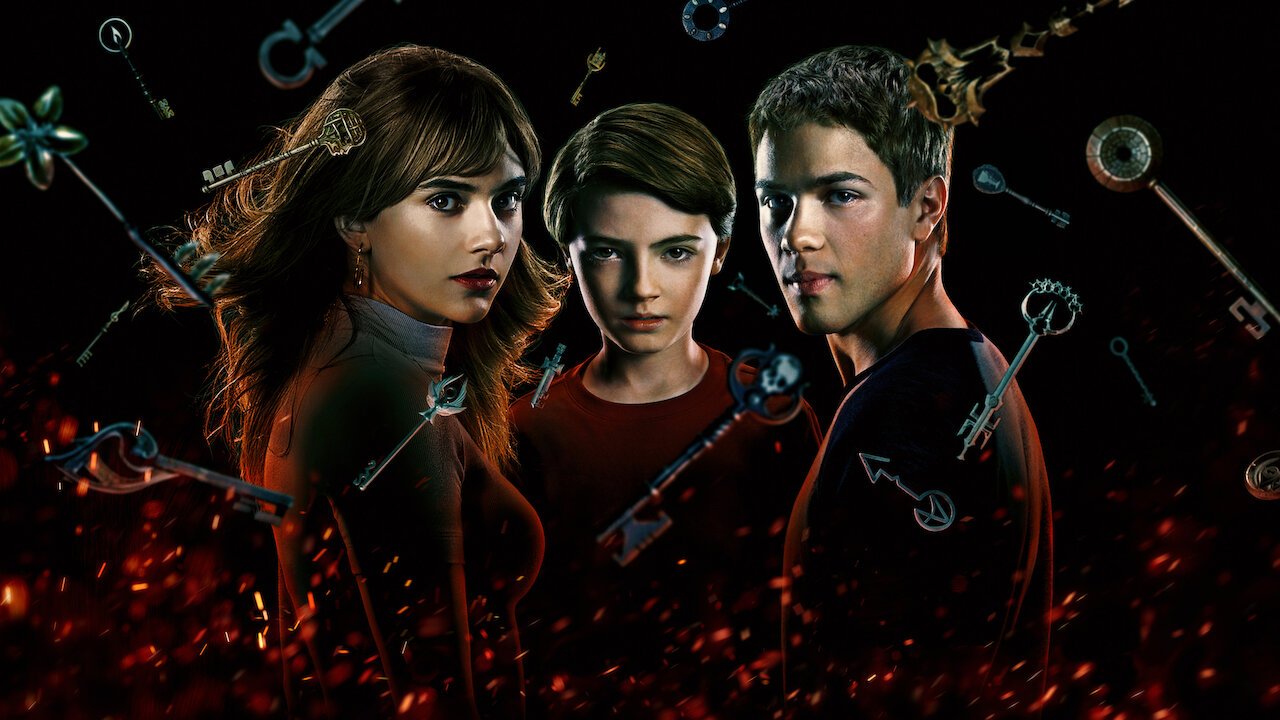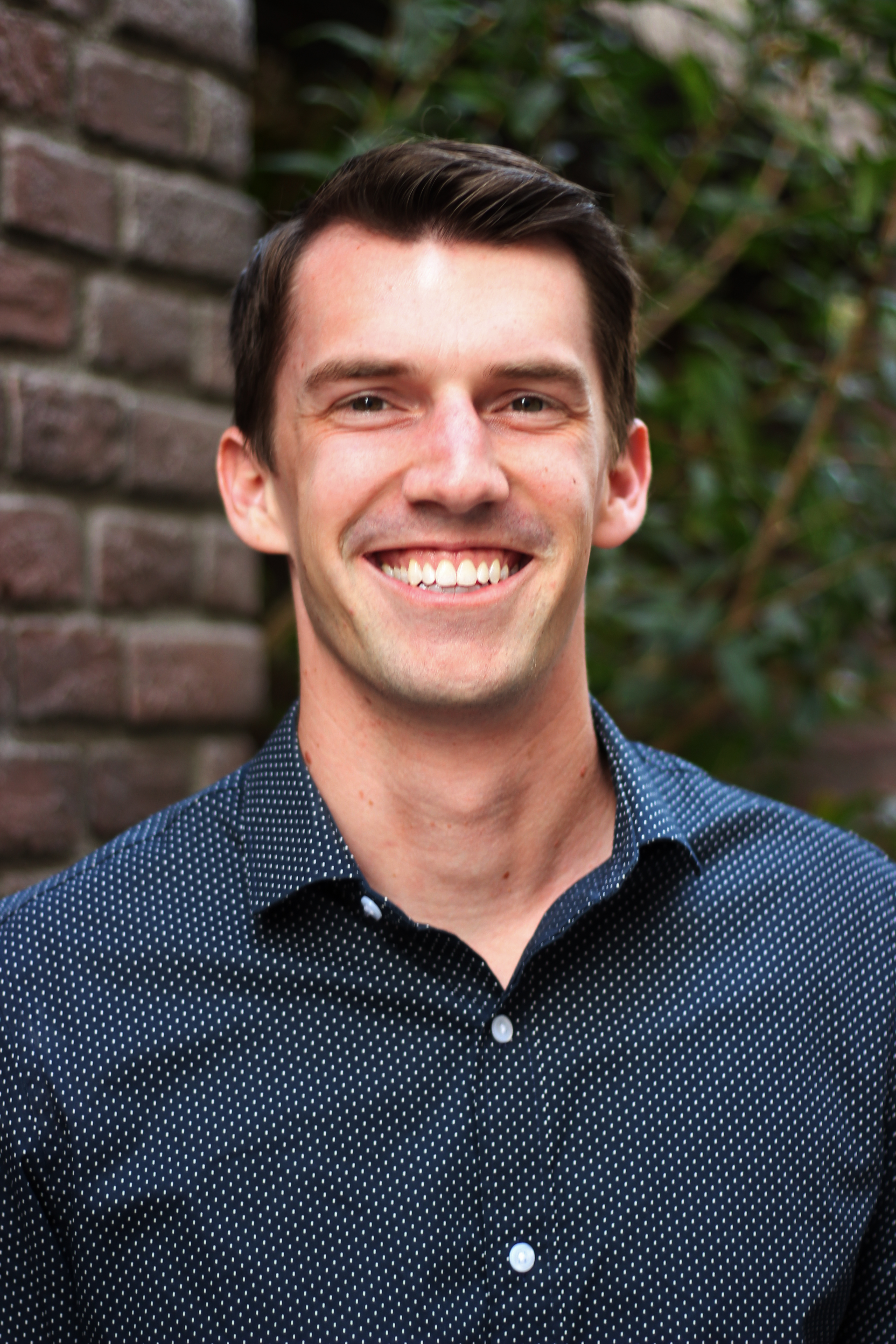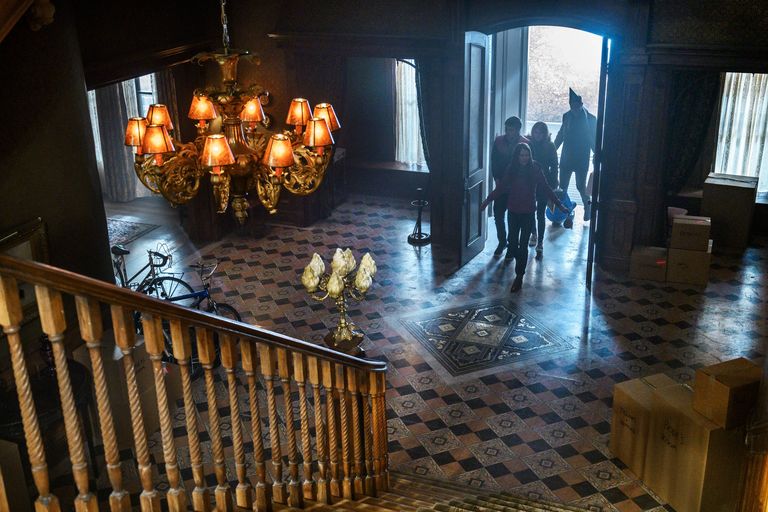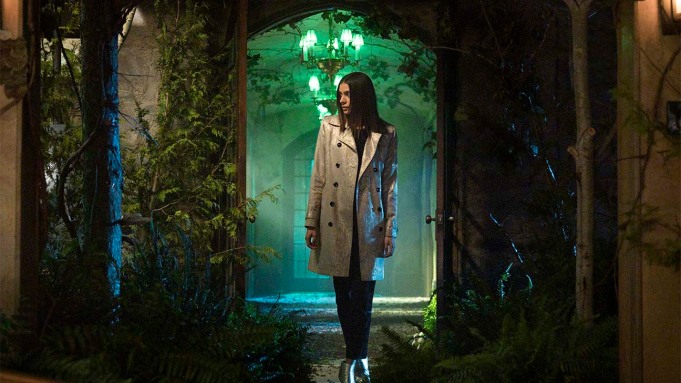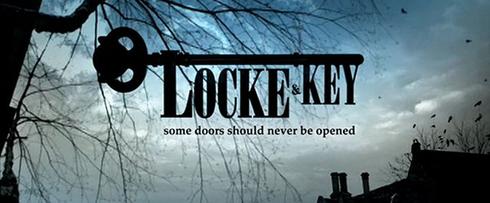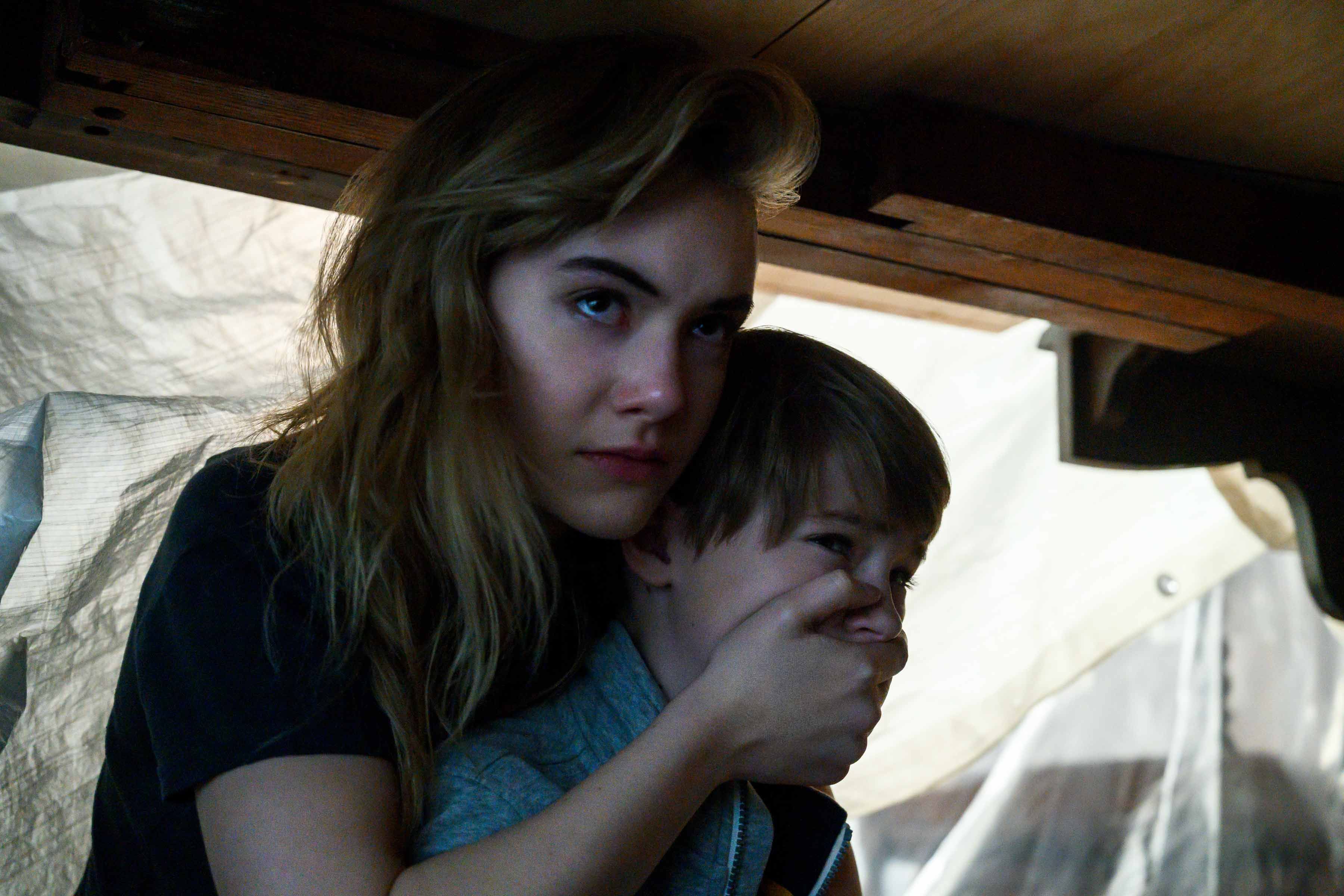October 30, 2021
Interview: Torin Borrowdale: Scoring Netflix’s LOCKE & KEY
Interview by Randall D. Larson
LOCKE & KEY is a 2020 American supernatural horror drama streaming television series developed by Carlton Cuse, Meredith Averill, and Aron Eli Coleite, based on the comic-book series of the same name by Joe Hill and Gabriel Rodríguez. It premiered on Netflix on February 7, 2020. The series stars Darby Stanchfield, Connor Jessup, Emilia Jones, Jackson Robert Scott, Laysla De Oliveira, Petrice Jones, and Griffin Gluck.
In March 2020, Netflix announced that the series had been renewed for a second season which premiered on October 22, 2021. In December 2020, ahead of the second season premiere, the series was renewed for a third season.
Premise: After Rendell Locke is murdered at the hands of a former student, his wife Nina decides to move with her three children, Tyler, Kinsey, and Bode, from Seattle to Matheson, Massachusetts, and take residence in Rendell’s family home, Keyhouse. The children soon discover a number of mysterious keys throughout the house that can be used to unlock various doors and give them various powers and abilities. They soon become aware, though, of a demonic entity that is also searching for the keys for its own malevolent purposes.
Music: The score to the show was composed by Torin Borrowdale. He studied film scoring at the University of Southern California and currently resides in Los Angeles with his wife, Sarah, and their dog, Bodie. Borrowdale recently scored Lionsgate/Hulu’s thriller RUN, starring Sarah Paulson and Kiera Allen. That film marked his third collaboration with director Aneesh Chaganty, following Google’s Mother’s Day spot “Seeds,” and the Sony Pictures drama SEARCHING, starring John Cho and Debra Messing. Borrowdale’s music is featured in Lionsgate’s horror-thriller THE TOLL, directed by Michael Nader, which premiered at the 2020 SXSW Film Festival; National Geographic’s two-part documentary WILD YELLOWSTONE, which he co-composed with Mark Murphy and Rod Morris; D.C. Hamilton’s action thriller THE MIDNIGHT MAN; and the Gino Anthony Pesi-starring thriller THE FARE. He also composed the “zen mode” music for Snowman’s hit iOS games “Alto’s Adventure” and “Alto’s Odyssey,” Apple Arcade’s iOS game “Where Cards Fall,” and more.
I recently spoke to composer Torin Borrowdale about his experiences and considerations scoring the show. – rdl
Watch the Season 1 Trailer for LOCKE & KEY:
Q: Aside from scoring THE FARE in 2018, a film involving a kind of time loop, LOCKE & KEY was your first overtly supernatural scoring project. How did you decide how to approach this aspect of the series?
Torin Borrowdale: What interested me about LOCKE & KEY was all the possibilities that the music could go into. There’s the horror aspect of it, there’s the fantasy aspect, there’s the family aspect, there’s the drama aspect, and for me it was really exciting to get to explore all these different genres within the same show – to see how they tied together and how they went from one to the next. I think the world that Joe Hill and Gabriel Rodriguez created [in the graphic novel] is just so expansive that it really felt fitting to have an orchestral score be the backdrop for the soundtrack.
Q: When you first came on board, how did you prepare to provide a score that would develop across an arc of ten episode hours?
Torin Borrowdale: I approached it based on the scripts. Depending on the dramatic need for a musical theme, I gave themes to certain characters, certain relationships, or certain keys, depending on how they influenced the narrative. For instance, in Season 2, Tyler and Jackie’s relationship plays a much more prominent role, and so their theme was really developed in Season 2, and there are some variations of that as their relationship progresses. But in Season 1, it just so happened that the scene where they were together didn’t have as much underscore, so there wasn’t time to develop music for them. When themes need to be developed over ten episodes it’s really necessary to figure out early on which ones are going to be important later and be more dramatic, otherwise you’ll end up writing a theme for everything when only certain ideas need themes.
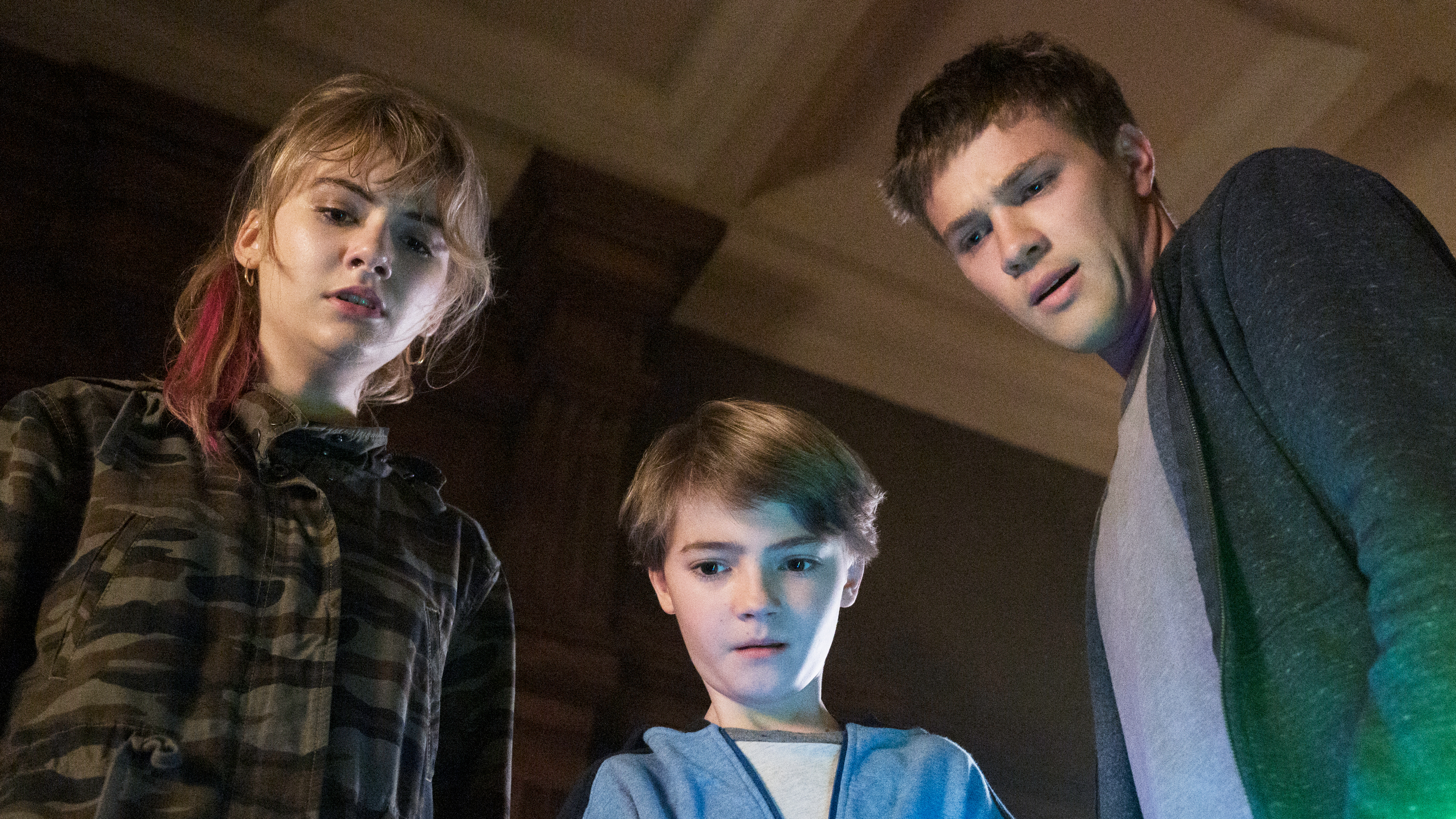
Q: Starting in Season 1, how did you determine, in discussion with the creators/showrunners, the kind of music they were looking for?
Torin Borrowdale: When we first started talking, it was trying to find the right balance of family and horror. We did want families to be able to watch the show but we didn’t want it to be too kid centric. We wanted to capture the wonder of the keys but also the horror of the keys. Carlton Cuse, who is one of the showrunners, said that it was three parts family and one part horror, and that seemed to be the right balance.
Q: What inspired your main theme and how did you create it?
Torin Borrowdale: I wanted the main theme to sound like you were exploring Keyhouse and you discovered all these hidden keys throughout the walls and on paintings and all that, and what would that feeling sound like? The main theme is what I landed on. I wanted it to be kind of propulsive and magical and fun, with a hint of danger. Not too dangerous, but just enough to expand on the limitless possibilities of all the keys and what you might be able to do with them.
Listen to the Main Title theme from LOCKE & KEY:
Q: What was your instrumental palette for the series?
Torin Borrowdale: Definitely orchestral. We had 40 strings, 11 brass, solo piano, solo cello, solo flute, and solo clarinet – in addition to sampled percussion, harp, and other things. I wanted it to have a very classic cinematic soundtrack. I felt that fit with the setting, it fit with the characters, and it fit with the worlds of fantasy we were trying to create. There are some more modern moments where it’s just synths, especially in Season 2, but for the main basis of it, it’s orchestral.
Q: How did you use music to explore the story’s territory – in other words, creating a sense of wonder, exploration, danger, and darkness as the show began and then developed that across the storyline?
Torin Borrowdale: My approach was to stay with the characters’ mindset. At the beginning it’s much more fantastical and whimsical, and half way through Season 1 when people start to die, it definitely gets more dark. The tragic backstory of the father was always very heavy and dark, so I relied on the writing and the acting to have a basis for where the score should go and enhance the emotions already on the screen.
Q: Would you describe the score’s thematic characteristics and how you created themes for the characters and situations in LOCKE & KEY’s first season?
Torin Borrowdale: For Season 1 we had lots of themes. Bode has a theme because he’s the main protagonist in the first season. The villain Dodge has a very aggressive theme that you first hear at the end of Episode 1. I tried to capture their characters on a larger scale and then find different ways to use those themes when they’re actually on screen. With Dodge, because at the end of the first episode we had a great opportunity to use her full-blown theme, whereas when we see her in, say, Episode 4, when she terrorizes the house, that theme is played again but much more as action music. For Bode, his theme comes in very innocently when he’s just walking through the woods, exploring, and I’ve been using it ever since in all of the different situations. Even in tense moments I’ll manage to sneak it in through the low register. I enjoy finding opportunities to use themes in unexpected ways that, if you’re really paying attention, you can identify.
There’s a theme for the Black Door*. It has such a huge presence in the show and it’s such an important door that I wanted the theme for it to be a little larger than life, so we have all the brass playing full fortissimo to give it that larger than life quality. Again, I’ll try to sneak it in when the characters are talking about the Black Door, in a way that feels organic, so that it adds depth to what the characters are saying.
* In LOCKE & KEY, the Black Door is a gateway to another world found in the lower levels of the Drowning Caves. It can only be unlocked with the Omega Key and once unlocked, allows demons – like Dodge – to pass through.
Q: How did you treat the concept of the keys themselves, as far as giving them a motif that would represent both the initial wonder of the keys and then later on the sense of foreboding that they bring about?
Torin Borrowdale: Depending on the key, sometimes it gets discovered in very innocent ways and ends up being used in bad ways, and I didn’t want to necessarily give away what was going to happen with it. I would track what the characters were feeling when they discovered it. Certain keys were important in an episode, so I would try to stick to thematic material for those keys whenever they were used. Other times when I didn’t feel like they needed their own theme, necessarily, we just used the main theme, which captures Keyhouse and covers keys in general.
Listen to the track “The Head Key” from LOCKE & KEY Season 1:
Q: The show begins to enter darker territory after episode 5, in which a murder occurs. How did you accommodate this shift in tone musically and/or instrumentally?
Torin Borrowdale: I definitely made the music darker by emphasizing the low register. Everything below Middle C tends to make things really dark. I abandoned some of the more whimsical aspects, especially from Bode, and used more tense strings, aleatoric effects, things of that nature to make sure the tension and horror was heightening.
Q: What can you tell me about scoring the first season finale? Were you aware that the show had been renewed for a second season at that point, and how did that affect where you were going with the season’s ending?
Torin Borrowdale: I don’t remember if I knew or not. I think I wrote Season 1 as kind of a closed piece, so if that was going to be the end of it, it would resolve conclusively. I was actually in the middle of reading the script and hadn’t yet read the finale, so I didn’t know about the big cliffhanger at the end of Season 1 until one of the producers spilled the beans. I was writing from the perspective of the characters in the show and the audience’s point of view, so I didn’t want to musically give away anything that was going to be revealed in the finale.
Watch the Season 2 Trailer for LOCKE & KEY:
Q: What can you tell me about what’s new and/or different about scoring the new Season?
Torin Borrowdale: [Spoiler Warning:] The main difference is that our villains have changed. I won’t elaborate too much, but this is in the trailer, so I can reveal that the new villain in Season 2 is Gabe and Eden. In Season 1 we followed Dodge’s progress in relation to the Locke family, and in Season 2 we’re seeing how Gabe and Eden work behind the scenes. That dynamic was totally different from Season 1. Rather than continue Dodge’s Theme for Gabe – and those who saw the finale of Season 1 will know that they’re the same person – I decided to write a new theme for Gabe, since the tone of how they’re portrayed on screen was so different. They’ve got a bit of swagger, a lot more infighting between the two of them, so I came up with a more pop-oriented track with a glazing synth sound and a beat that seemed to fit the characters better than an orchestra would.
Listen to the theme for “Gabe” from LOCKE & KEY Season 2:
Q: How have the other thematic elements from Season 1 been developed into the needs of Season 2?
Torin Borrowdale: One of the themes, the Matheson Theme, which only appears a couple times in Season 1 – right at the beginning and then right at the end – represents the town. When it’s first introduced it’s a new beginning for the family and a really bittersweet moment, but it represents a place for them to start again. When we start Season 2, everything is good with the Lockes, they think everything is fine, and so we use that same theme again but it’s a little brighter, a little more upbeat. It feels like they’ve been living there a while and are very comfortable there. So I tried to do things like that when I bring back themes from Season 1; update them to be more fitting to what the atmosphere is in Season 2. It was fun to get creative in developing themes that way.
Listen to “Welcome to Matheson” from LOCKE & KEY Season 1:
Q: With A 3rd season already being renewed – without giving away anything story wise – have you had any thoughts about what the unique musical needs might be for a third season?
Torin Borrowdale: We are in the middle of doing Season 3 as we speak, but unfortunately I can’t say anything about it. I will say that there are a lot of moments – many of these happened in Season 2 as well – where there are big one-off set pieces that happen for a specific episode. For instance in Season 2 there’s The Spider Incident and The Mannikin Incident and the demons – really fun set pieces like that where I’ll come up with a thematic idea for the episode that only lives in that episode. Let’s just say that continues into Season 3!
Q: What I find interesting about the show, especially where it began with this very interesting and almost light styled main theme, but finding opportunities for very dark, perhaps subliminally dark, themes that come as things get a little darker. Would you describe your way of scoring the darker aspects and contrasting that with the way the show opened with a much lighter tone?
Torin Borrowdale: I think my approach to the darker elements has been to take the characters seriously and play up how life-threatening a lot of these situations really are. And so, in Episode 1 of Season 1, when Nina gets lost in the mirror, I’m playing it from Bode’s perspective, even though he’s young and his mom has gotten trapped and is dead for all he knows, and so I wanted to make sure that, especially after the death of his father, that that was a really heightened emotion and is really propelling the story forward. I’ve noticed that it’s important for the score in this show to keep the momentum moving forward – especially at the end of the episodes, at the climax when everything is coming together, the music really needs to push the narrative along and make sure that it feels as exciting as the characters are feeling in the scene.
Q: What’s been most challenging for you in scoring this show?
Torin Borrowdale: I think the biggest challenge has been the sheer volume of music to write. I think we did four and a half hours per season, and there’s not much time to second guess things. You just have to move forward. Luckily, since we started from the beginning with developing these themes over seasons, a lot of it has become very simple to score quickly, because I know all the themes, I know how the characters react to things, I know when to go light and when to go dark, so there’s a lot of shorthand in prepping for these episodes that makes it so that we can record and mix everything we need to.
LOCKE & KEY’s Season 1 digital soundtrack was released on March 13, 2020, with Season 2’s soundtrack issued on October 22, 2021. Both are available via Maisie Music Publishing, on Amazon, Apple Music, and other digital music and streaming services.
Special thanks to Alix Becq-Weinstein and Jana Davidoff of Rhapsody PR for facilitating this interview.

